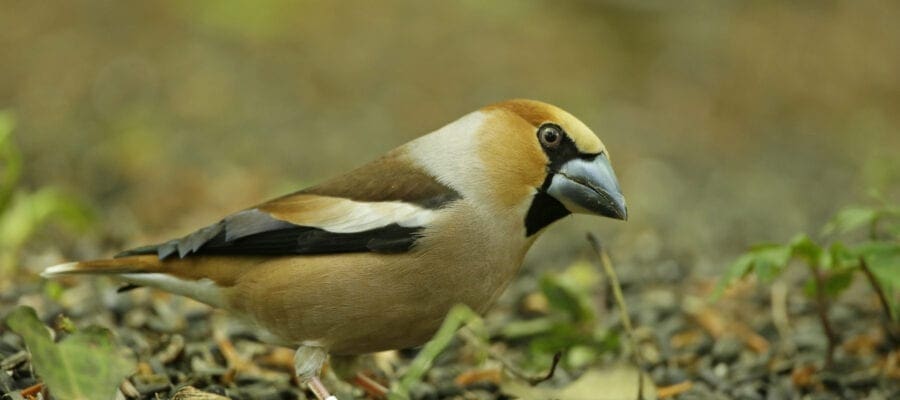The hawfinch has landed! Find out more about this shy bird, and extra news just for subscribers, in our latest Subs Club for November
Year of the hawfinch
Above: A rare hawfinch. Picture: Andy Hay (rspb-images.com)
Last year saw a ‘waxwing winter’; this year it’s the turn of the lesser-known hawfinch. The UK’s largest finch, it has a massive, parrot-like bill which can crack even the hardest nut shells. Always shy and difficult to spot, the hawfinch has become rarer in Britain in recent years, and there are now thought to be fewer than 1000 resident pairs. Each winter some hawfinches from the Continent travel to Britain in search of food – and this year there’s been a large influx, an event known as an ‘irruption’.
Lizzie Bruce, warden at The Lodge, the RSPB’s headquarters in Bedfordshire, says, “In our county alone over 230 hawfinches have been counted. That’s extraordinary, as in most years we are lucky to see one or two. At The Lodge we’ve had up to four hawfinches in the tops of the birch and yew trees with single birds flying over most days in October. This has caused great excitement for our visitors and RSPB staff, who have been dropping everything and running out the office to catch a glimpse of one perched at the top of a tree.
“Typically irruptions are associated with failing food supply: too many birds, or not enough food for them to survive the winter. This happened with waxwings last year. The weather is also a factor. Hawfinches traditionally migrate south from their breeding grounds in Central Europe towards the Mediterranean. This year their migration coincided with the arrival of Storm Ophelia which headed eastwards from the Atlantic swirling anti-clockwise, with the strong winds pushing many of the migrating hawfinches into the UK.”
The most likely places to spot native hawfinches are western England near the Welsh Borders, the Home Counties and the south-east from Hampshire to Kent, and most of the migrant sightings have been in southern England and into Wales. Hawfinches perch high in trees, but they also feed on the ground, eating seeds, buds and shoots. Winter is your best chance to spot them, while many trees are bare.
Find out more at
https://ww2.rspb.org.uk/about-the-rspb/about-us/media-centre/press-releases/hawfinch/
Marrow escape…
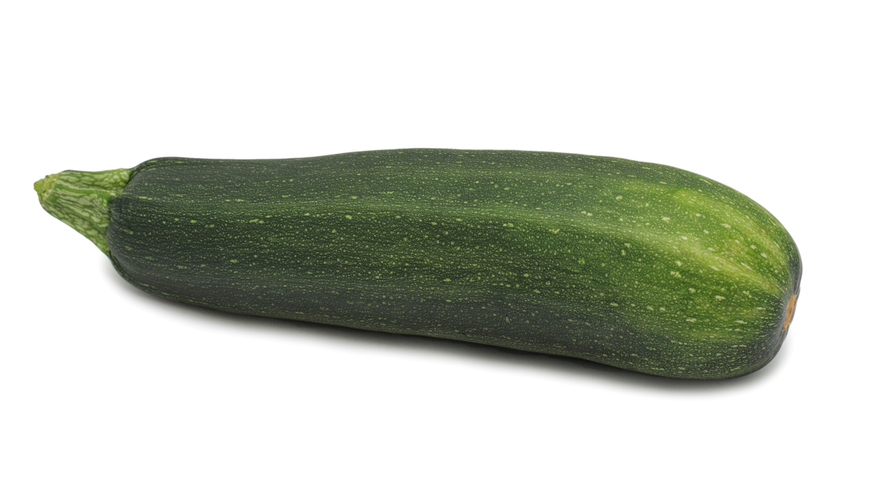
Picture: Marrow… more of a dinner than a danger!
Vegetable growing can be a dangerous business. Police in Germany were called to investigate a suspected bomb a couple of weeks ago, only to discover that the suspicious cylindrical object on the worried householder’s lawn was in fact a very large, very dark green courgette. It is thought that it was dropped there by local teenagers, rather than a World War Two bomber. Unexploded bombs are still regularly unearthed during construction work in Germany, so it pays to be careful.
Meanwhile, Nottingham police were visiting a man who had ordered a suspiciously large quantity of fertiliser and plastic pipes online. Arriving unannounced, they conducted a detailed search of his house for further evidence of bomb-making equipment. He then gave them a guided tour of his vegetable garden, growtunnel, greenhouse and three allotment plots, showing them his extensive range of exhibition vegetables and impressive collection of show certificates.
Read more at https://www.theguardian.com/world/2017/nov/03/germany-police-bomb-garden-courgette-zucchini and http://www.nottinghampost.com/news/local-news/marrows-terror-giant-vegetable-grower-731367
Dahlias for bees
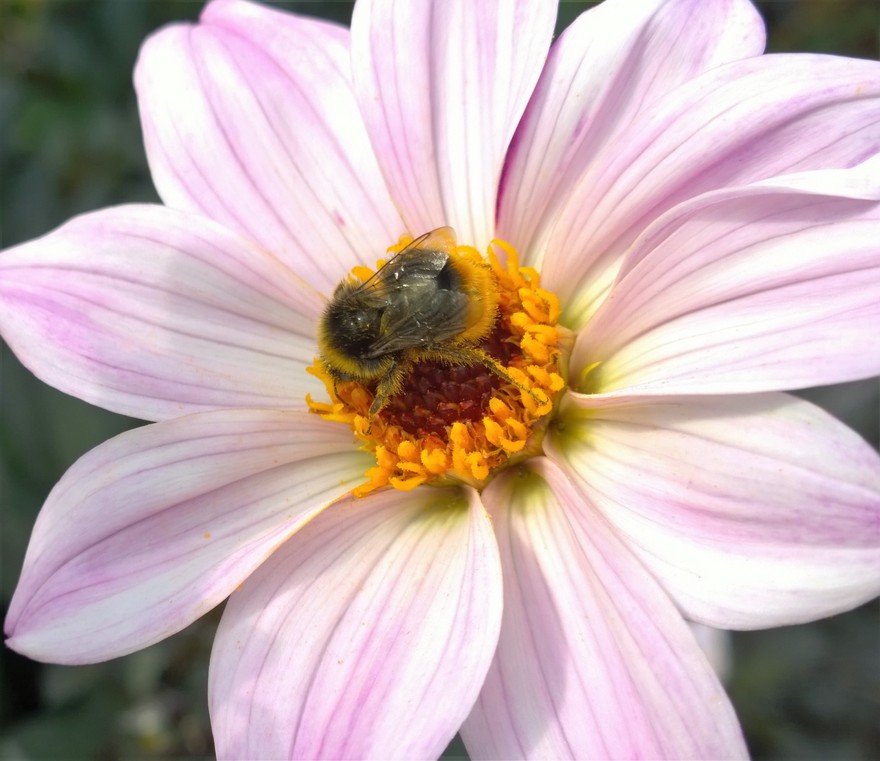
Picture: Blooms for Bees
The results from the Blooms for Bees dahlia trial are in – and it looks like white flowers have the edge, though more research is needed. Seed was sent out to gardeners around the country to test the potential of Mignon Series dahlias as insect-friendly bedding and find out if bees have a colour preference. Participants were asked to grow three white, three red and three purple-flowered plants and use the Blooms for Bees app to record visiting bumblebees.
Overall, the white-flowered plants had a greater number of blooms and slightly more bumblebee visitors, though the difference was too small to be conclusive. In the organisers’ own trial at Ryton Organic Gardens, the duration of each bumblebee visit was also recorded. Bees appeared to spend significantly longer foraging on the white-flowered plants, probably because of the greater average number of open flowers.
The majority of participants thought the Mignon dahlias were well visited by bumblebees compared to other bedding plants, with 56% saying they would grow them again. Forty-three per cent thought a certain colour was more visited – but opinion was divided equally between white and red. Many participants, however, reported that the dahlias were not always the bumblebees’ first choice when other attractive flowers were in bloom nearby. This was particularly noted in the presence of lavender and cosmos.
Find out more at http://www.bloomsforbees.co.uk/dahlia-trial-results/
Britain backs ban on neonics
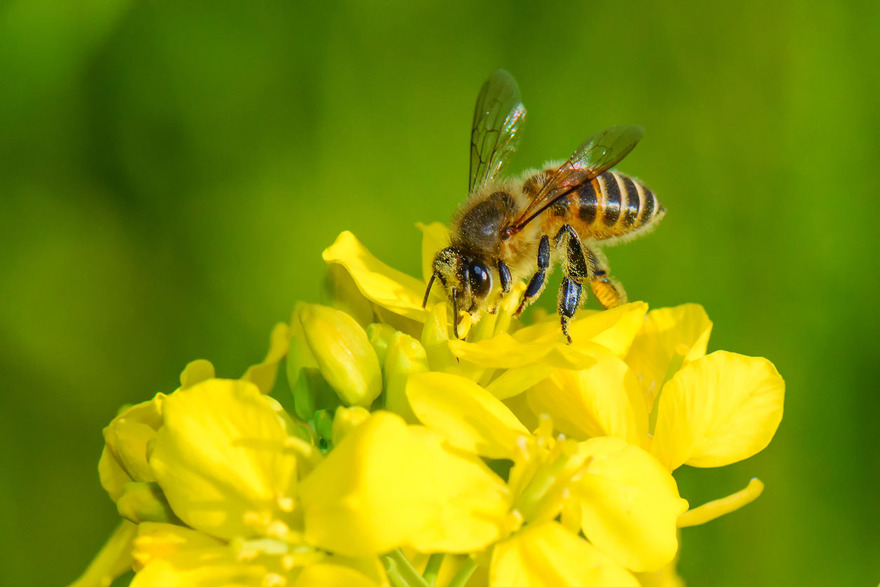
Picture: Bee on oilseed rape.
Tougher restrictions on neonicotinoid pesticides are justified by the growing weight of evidence that they are harmful to bees and other pollinators, Environment Secretary Michael Gove has said – and unless the evidence changes, the Government will maintain these increased restrictions post-Brexit. This marks a dramatic shift in policy since 2013, when the UK opposed the EU ban on three neonicotinoids.
Mr Gove said: “I’ve always been clear I will be led by the science on this matter. The weight of evidence now shows the risks neonicotinoids pose to our environment, particularly to the bees and other pollinators which play such a key part in our £100bn food industry, is greater than previously understood. I believe this justifies further restrictions on their use. We cannot afford to put our pollinator populations at risk.”
Since 2013, the EU has banned the use of three neonicotinoids – clothianidin, imidacloprid and thiamethoxam – on a number of crops attractive to bees, such as oilseed rape. The European Commission has now proposed restricting these three neonics to use in glasshouses, with a vote due to take place by the end of the year.
Only a week after Michael Gove’s announcement, more evidence emerged when University of Stirling researchers published the results of their study of ‘buzz pollination’, which found that neonics affect bees’ memory and cognitive abilities.
Lead researcher Dr Penelope Whitehorn says: “We found that control bees, who were not exposed to the pesticide, improved their pollen collection as they gained experience, which we interpreted as an ability to learn to buzz pollinate better. However, bees that came into contact with pesticide did not collect more pollen as they gained more experience, and by the end of the experiment collected between 47% and 56% less pollen compared to the control bees.”
Find out more at https://www.gov.uk/government/news/environment-secretary-backs-further-restrictions-on-neonicotinoid-pesticides and https://www.stir.ac.uk/news/2017/11/pesticides-may-cause-bumblebees-to-lose-their-buzz/
Farm Terrace, one year on
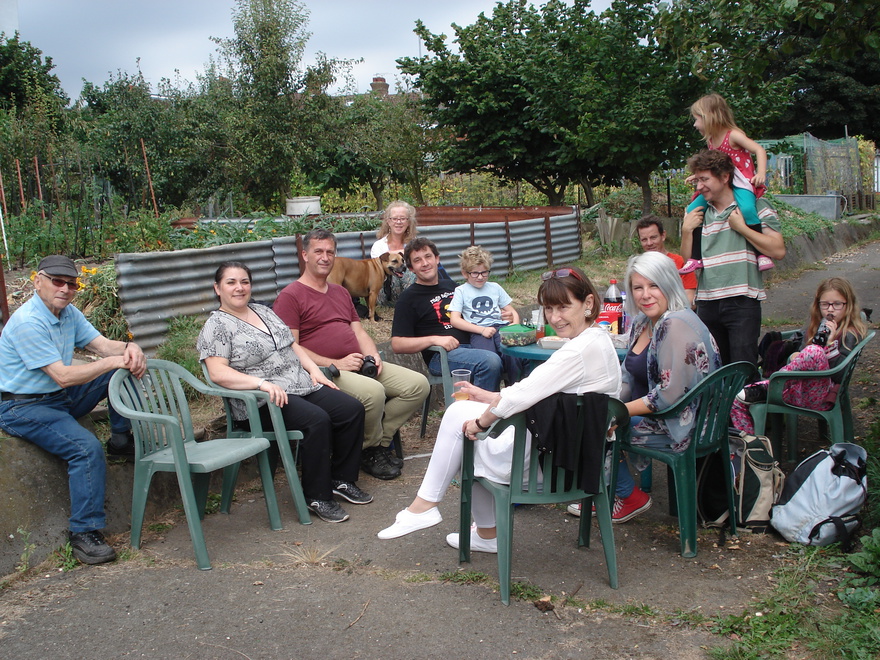
Picture: The Farm Terrace campaigners on the site in its final summer.
November 2 marked a year since the Farm Terrace Allotments campaigners (featured in KG in March 2017) lost their epic four-year battle to save their site. Although the plot-holders had won two previous court cases, Watford Borough Council, which claimed to need the land for hospital facilities, persuaded the judge in the third case that the situation constituted the ‘exceptional circumstances’ which can override the statutory protection of allotments.
Over the course of the campaign it became increasingly clear that the proposed ‘Health Campus’ was merely camouflage for the acquisition of land for housing and car parking – and one year on, there has been no development of the hospital, or anything else. No planning application has yet been submitted. The Farm Terrace land has simply been fenced off and abandoned, and another crop from the site’s many fruit trees lies rotting on the ground.
The council was legally obliged to replace the lost plots and relocate the remaining tenants together. The ‘replacement’ plots are two miles away – so the small group of surviving Farm Terrace plot-holders chose instead to move to a closer site.
“As any allotment holder knows starting a new plot is daunting,” says their spokesperson Sara Jane Trebar. “Luckily we had experience and knowledge but it was hard work and bittersweet preparing the new space.” They have had a productive first season – but she says: “We still felt like misplaced refugees in a place we did not choose after decades developing our Farm Terrace community.
“We have turned our anger and bitterness into digging, building and planting. The fact we could do this side by side was invaluable. To retain some identity we named our plots in the corner of Holywell allotment site ‘Farm Terrace Corner’ so our old site will never be forgotten.”
Read more at https://sjtrebar.wordpress.com/2017/11/02/farm-terrace-allotments-one-year-after-we-lost-the-fight-to-keep-our-plots/

